Today it is difficult to imagine the landscape design of any site without the presence of coniferous plants on it. It is they who decorate the garden or a lawn in front of your home throughout the year and even in winter do not lose their bright appearance and fragrance.
The variety of coniferous plants is very large, so it is often difficult to choose something one thing, because you always want to find a unique and beautiful instance. In this case, you should pay your attention to the cypressik, which is perfect for single and group landings, as well as to decorate alpine slides and stony gardens. However, it is not worth confused by this plant with a very consonant - cypress. Sometimes even experienced gardeners cannot understand the difference between these two representatives of conifers. And everything is very simple - the cypressive has more flat branches with small cones and has better frost resistance.
More details on the features and description of the cypressovka we will look at this article. And also learn a variety of species and varieties of this plant, we note the main nuances of agrotechnology of cultivation.
Description and main characteristics of the cypress
The cypressive is an evergreen coniferous tree, which belongs to the family of cypress and is a monocotable plant. Cypressian is not at all the same as cypress. Unlike its more capricious fellow, the cypressive is more resistant to cold and some of its varieties can winter without shelter. The natural habitat of this coniferous tree is considered the territories of East Asia, in particular Japan, and North America. However, many species can be found almost all over the world, they feel well in Europe and Russia. In the gardens, the cypressovik is cultivated from the 18th century and every year gaining increasing popularity.
Description of the cypressian:
- Cypressian in nature can grow up to 70 m and is a real giant. In culture, its height is much more modest - only 20-40 m.
- The trunk of a tree is covered with brown bark, which is similar to small scales.
- Cypress needles are also covered with small scales. She grows pretty thick.
- The needles of this tree forms the correct and compact crown in the form of a cone. It is this feature that the cypress is similar to that.
- The color of the needles can be light green and dark green, yellowish green and even with a blue tint.
- The leaves in young plants have a needed shape, becoming scaly with age. Pointed and tight pressed.
- One of the main differences in cypressovka from cypress is the presence of small cones on the needles, which are fruits with seeds. Cypress seed only two is also his difference from cypress.
- Seeds can be matured for the first year after landing, subject to comfortable conditions and proper care.
- In this popular coniferous-tree, among the landscape designers, there are seven species, on the basis of which a huge amount of varieties are derived, which are characterized by height, color of needles, cultivation conditions.
- The cypressive is great for growing in single landings and group, as well as for decorating alpine slides, rocaries, rocky gardens and terraces. Also dwarf varieties of this tree can be planted in public and growing as indoor plants.
Variety of species and varieties of cypress
Total today has only 7 types of cypressive, which have different characteristics. However, even such a small number of species has more than 200 varieties, many of which can be grown in a moderate climate of Central Europe without problems. Let us consider in more detail all the variety of cypresses, their characteristics and features.
Cypress Gorokhoploda
This type of cypressive is the most popular and common in our climatic zone. The cypressian of the pea can also be grown as a room plant, where it grows to a height of up to 2 m. This coniferous tree prefers to grow at open and sunny places, it is well tolerating the strong gusts of the wind. The ideal for its condition is moderate humidity, so it does not tolerate drought. The cypressian in nature is growing in Japan, where it can reach a height of 30 m. However, in the gardens, this plant grows only 2 m, which is ideal for its use in landscape design. The crown is the right openwork cone, which is formed by a cheese of a beautiful bluish shade.
Popular hydrochlorian cypressive varieties:
- Variety "BULLARD". This variety is most often used for planting areas, but it has not very good cold resistance. Recommended for cultivation in southern regions. The height can reach an average of 5 m. Krone Kiparisovka Buleveard has a very interesting shape that resembles a shelter. The needles of a sisido blue shade with small cones.
- Cypressian variety "Nana". From the name it is clear that this cypressive variety is a dwarf, and it also grows very slowly. It can achieve in a height of only 60 cm for age of 60 years. Crown grows in the shape of a pillow, is formed enough small joy of a bluish shade.
- Variety "Fiutra". This species can grow up to 5 m. Crown has a cone shape, is formed by a hay of gray-green. There is another variety of this variety - Fiorifer Aurea, which is distinguished by the golden yellow cheese.
Cypress Lavson
This type of cypressive received its distribution from North America. In nature, it can reach a height of 70 m, but in culture can maximally reach 2 m. The crown has the form of a narrow cone, so very often the top of such a tree can be cloning the side. The needles are thick, bright green with small cones up to 10 mm in length. This is a very beautiful view, however, it also differs in not a high level of frost resistance. Prefers to grow at sunny sites, like moisture. It is perfect for growing on the alleys, for group landings and single.
Popular varieties:
- Cypress variety "Elevood". This variety of cypressives can reach a height of 3 meters. It is distinguished by the correct cone-shaped form of the crown. The needles are quite thin, blue. There are several forms of this variety: Gold, White, Pillar.
- Flatchery variety. Very high grade - a tree can reach 8 meters. It is distinguished by a blue-green jewelery in summer, and in autumn a little with a purple tint.
Cypressian stupid
The birthplace of this type of cypressive is Japan. In the natural habitat can reach a height of 30-50 m. Krone is the form of a cone with a thick growing cheese. Thin branches are thin and very branched. In color, it is on top of a green or yellowish green shade, and below with white stripes. Very light-loving and frost-resistant look.
Popular varieties:
- Grade "Office". It features the original form of the crown - keglet. In height, it can grow up to 2 m. The needle consists of a thick growing needles of light green.
- Sanderi grade. This is a dwarf variety of cypressive, which grows very slowly. The needles of a tree bluish-green, and in the winter it becomes a purple shade.
Chiparisovik Nudkansky
The natural habitat of this type of cypressive is North America. It is a long-lived tree, in one place can grow 500-600 years. It grows very slowly, height can reach 30-40 m in nature, and in the culture of its parameters is significantly less. Crown shape cone-shaped, thick. Escape tips slightly hang. Red needles. Perfectly tolerate drought, prefers to grow at sunny places.
Popular varieties:
- Sort "Pendula". This is a plain type of coniferous trees. The shoots on the Kiparisovka Pendula are slightly hanging, the needles are thick, dark green. Height can reach 15 m.
- Grace. Pretty high tree - can grow 15-20 m. Crown has the shape of a narrow cone, consists of barbed and thick needles of bluish-green.
Tuchoid cypressovik
This type of cypressive origin from North America, in nature can reach 25 m. However, in culture can grow on 2-3 m. Krone has the form of a narrow cone. The needles of light green or with a bluish tint.
Popular varieties:
- Grade "Conic". Dwarf grade cypress trees, which is great for alpine slides, rocaries and stony gardens. It grows very slowly. Krone has a shape of a chat.
In addition to the above types of cypressovka, it is still necessary to note the cypressovik mourning and Formozsky. Among the wide variety of varieties of this coniferous tree, you can easily choose the most suitable form for growing on your site.
Methods of breeding cypressovika
The cypressovik is multiplied with various ways, depending on the type, the use of a seed method is possible, as well as vegetative. In our gardening, seeded breeding, reproduction of stalks and grains are widely used. Consider all options in more detail.
Seed breeding cypressovika
This method is most suitable for breeding wild varieties of cypressovka, since the procomposition of decorative species of this tree results are obtained by very different and not all copies will inherit maternal signs.
- Seeds for breeding must be collected in the fall after their full maturation. The landing material is then dried at a temperature of 30-40 degrees, as an option, in a brass cabinet.
- Store seeds are needed in hermetic packaging, which will allow them to maintain the germination for 15 years.
- Before planting seeds, it is necessary to subjected to the process of stratification. To do this, in December or January, it is necessary to prepare containers with soil mixture consisting of peat and sand. The earth is moisturized and seeded on the surface of seeds, which are poured with a soil with a thickness of 2 cm. Capacity should be placed in a refrigerator with a temperature of 2-3 degrees.
- The process of stratification is lasting for 2-3 months.
- At the beginning of the spring, the containers with seeds need to be put into room with room temperature, where the first gears will appear during some time.
- Capacities with seedlings should be in a sunny place, however, without direct sunlight on them.
- When comfortable temperatures are installed in the fresh air, the seeds need to be ordered naturally, pulling them into the street.
- After the seedlings are growing enough, they can be planted in an open ground in a half. For the winter, bedding needs to be stolen.
Pencornia reproduction
This method of reproduction is the most reliable, it is it that guarantees almost 100% rooting of young plants.
- Silent reproduction must be spent in spring or early summer.
- To do this, in a young and healthy plant, you need to pick up strong side shoots of the past or current year.
- The cuttings are cut from the top shoots. The average length of one cutter should be 5-15 cm, depending on the specific type or variety of cypress.
- From the bottom of the cuttings you need to remove all your cheva.
- Further, all cuttings are rooted in pots with a suitable soil mixture, which should consist of sand and peat. All containers need to be covered with a film to create a greenhouse effect, since for the rooting of the cuttings you need high humidity - 90-100%.
- On average, with proper care, cuttings are rooted within 1-2 months. The main thing is to maintain the humidity you need.
- After rooting, planting material can be planted in an open ground, where seedlings will winter.
Reproduction by chains
This method is the easiest, however, only suitable for those cypressive varieties that have a griming crown shape or branched grounds.
- An adult plant needs to choose lateral and strong shoots that are close to Earth.
- Next, make a small incision on the outside of these shoots.
- All shoots are thrown into the ground and are fixed with special cuts to the surface.
- The place of contact of escape from the ground must be filled with soil and pour.
- During the whole time, while the young plant be rooted, it is watered.
- The rooting can occur in the fall, but the transplant is best to postpone the spring.
Stages of preparation before planting a cypress
It is important that the money you spent on the purchase of planting material, do not disappear. After all, it is necessary to prepare for obtaining a beautiful and healthy cypress. And for this you need to carefully treat seedlings, as well as for the correct selection of the landing site. It is important to prepare the soil under the landing.
Stage 1. Selection of cypress seedlings
The choice of high-quality and healthy seedlings is the key to getting a beautiful coniferous tree, which will delight you for long years.
- In no case do not buy a kiparisovik with an open root system, as it, like all conifers, does not cut the root drying, and therefore can die.
- Purchase the seating material only in specialized nurseries and shops.
- It is important to check before buying, rightly the seedling rose for a long time in the container or reasured him recently. To do this, simply turn the pot upside down. If the soil does not refuse or get a big room, then such a seedling can be bought.
- Before buying, carefully inspect the appearance of the seedling - the tips of the needles should not be dry, the branches should be easily stuffed.
- Also when choosing a cypress seedlings, take into account the future landing place, the choice of a particular variety will depend on it. For rocky gardens and rocaries, low-spirited species are suitable, and for single landings - more tall.
Stage 2. Selection of Place
It is also important to choose the right place to plant a saplings of a cypress.
- The cypressive is a shadowed plant, so it is best to choose a plot in a light half. With the complete absence of the Sun, the tree will lose its decorativeness.
- It is strictly not recommended to plant these plants in lowlands, as cold air can accumulate there, which harms these plants.
- The choice of place will depend on the cypressive variety you choose. Dwarf forers are ideal for landing on alpine rols, terraces, indoor pots. More tall specimens are ideal for single and group landings.
Stage 3. Soil preparation
The cypressive is growing well on thin soils without lime. For the full growth of these plants, the soil should be nutritious and well-drained. The soil under the landing should be prepared in advance so that the soil can settle over the winter.
- Well redo the selected area, about the bayonet shovel.
- Then you need to dig up the landing pits 90 cm deep and 60 cm in width. If you sit down several plants nearby, then the distance between them should be from 1 m to 4 m, depending on the variety.
- Place the bottom of each pit, place a layer of 20 cm drainage. As a drainage, you can use broken brick or gravel. This will prevent long-term stagnation of groundwater at the roots of the cypress.
- Next, prepare the soil mixture, which should consist of a delicate earth, humid, peat and sand in the 3: 3: 2: 1 proportion. Each planting pit need to fill this mixture half. For the winter, the soil copies and by the time the landing will be in perfect condition.
TECHNOLOGY PLAYING CYPARISE IN OPERATING GROWN
- Planting a cypress woman is recommended to exercise in spring, approximately in April. The main thing is to manage the soil.
- Before boarding, it is important to shed a planting hole with water. After that, it is necessary to carefully remove the seedling from the container. It is not necessary to shake the earthen one, it is enough to pour water. You can use the corneum solution.
- Next to each landing pit, place seedlings, carefully placing the roots.
- Soil mixture consisting of a delicate earth, humus. Sand and peat, it is necessary to mix with the fertilizer of nitroammofoski, about 300 gr.
- Put all seedlings with the prepared ground so that the root neck is over the surface of about 10 cm.
- Well-bypass each pit, and then reap the soils again so that the root neck is at the same level.
- The soil around the seedling must be closed. As a mulch, you can use dry peat, sawdust and bark of trees to prevent soil drying.
- Higher seedlings can be tested to the support.
Features and secrets of cultivation of cypress
Further care for the cypressovik is not difficult, so even an inexperienced amateur gardener will cope with this non-hard process. The main thing is to know some nuances and the secrets of agrotechnical growing.
Watering Kiparisovika
The cypressovik of any kind and variety loves to grow in conditions of high humidity, both in the soil and in the air. Therefore, regular irrigation is the most important stage in the process of care for this plant. On average, every plant should be watered once a week 10 liters of water. In a dry period, the amount of irrigation to increase to two, and the volume of water can also be increased. All the cypressives react well to spraying, which for adult trees is held once a week, and for youngsters - every day. Spraying should be carried out in the morning or evening.
Loosening and mulching
Each plant also requires periodic soil looser in the rolling collar. It is necessary to loosen about 20 cm deep into the depths. It is important to remove all weeds. Next, the rolling circle should be filled with mulch to prevent soil drying. As a mulch, you can plug dry peat or sawdust. Young seedlings are also important to create a slight shading. It can be natural or specially created.
Podchar
The first feeding is held for the first time only two months after landing. What do you remember that the recommended dose must be reduced twice. In the future, fertilizers should be two times a month. For feeding, a complex mineral fertilizer is ideal, for example, Kemira for coniferous plants. During the feeding of 100 grams of fertilizer, you need to scatter on a rigorous circle and gently close in the soil. Then pick up well water. All feeding should be sure to stop in the middle of summer, since the plant may not have time to prepare for winter.
Shelter for winter
The cypressovik is sufficiently resistant to frozen, but in case of a honest winter and severe frosts, it is recommended to climb the rolling circle with a thick layer of peat or fallen foliage, as well as to cover the bagnote. Young plants can be in full. To do this, the cauldron is used, on top of which the nonwoven material can be applied. In the spring, it is necessary to remove the entire covering material.
Trimming
All types and varieties of cypressov are well reacting to pruning, but it is important to spend only early in the spring. Every year before the start of the growing season, it is necessary to conduct a sanitary trimming of the crown of the plant. Remove all frozen and damaged branches. Forming trimming is carried out only a year after landing and is mainly in maintaining the natural form of cypress. In the process of such trimming, cutting only a third of escape is allowed.
Fighting diseases and pests
Growing a cypress woman in your site will not bring you special problems with the struggle against various diseases and pests. Cypressians are very resistant to these negative factors. However, occasionally pests can appear on these plants, and trees can sometimes suffer from diseases.
Pests:
- Cute tick. With the appearance of these pests, the shoots of the tree can turn yellow, also turn yellow and fall out of its leaves. Special preparations are used to combat them, for example, Nissoran or Union. What does the processing need to be carried out in several techniques with an interval per week.
- Shields. The appearance of these pests contributes to the drying and fading of the plant. To combat these pests, the drug is used.
Diseases:
- Root rot. This disease most often can be found on the cypress. It may appear due to improper plant care. To combat this disease, it is necessary to use fungicides. With damage to the root system, the plant needs to be destroyed and burned, and the soil is processed.
Using a cypressian in landscape design
- Cypressian can be used for single or group landings for several instances.
- More lowered varieties are suitable for decorating rocky gardens, rocaries, alpine slides and terraces.
- Cypressian fuel is great for growing in containers and pots. It can be used as indoor culture.
Stock Foto Cypressian in landscape design
You can more clearly see all the beauty of this plant on the proposed photos.
Single landing
Use to decorate stony gardens
To create Bonsayev
To create garden compositions
Cypressian is a great option for use in landscaping your site. If you want to make it unique, do not be afraid of difficulties. Growing a cypress woman is a fairly simple and very exciting process.

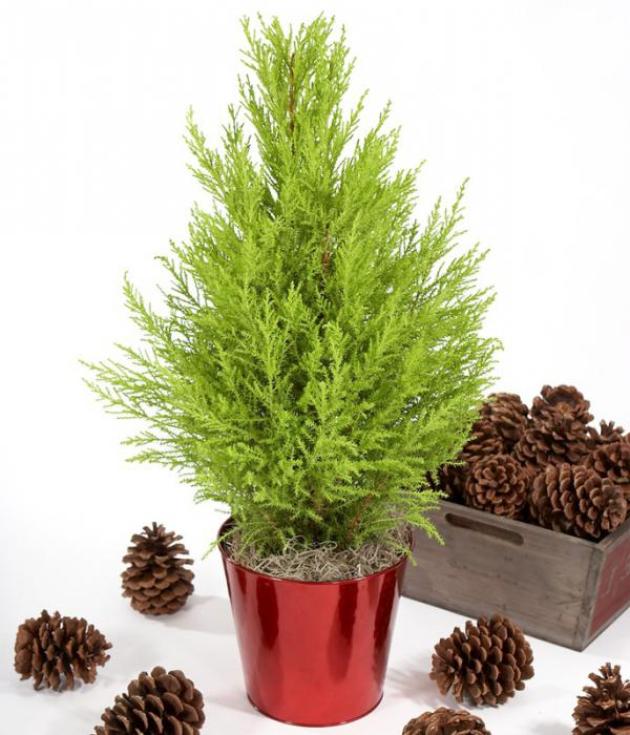
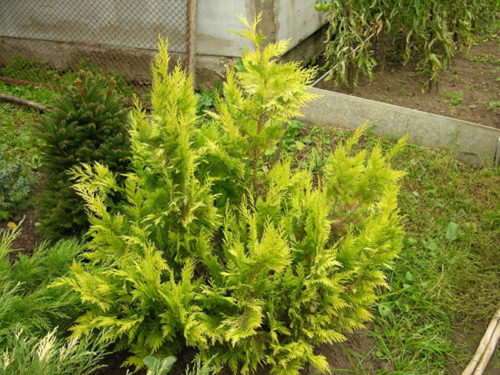
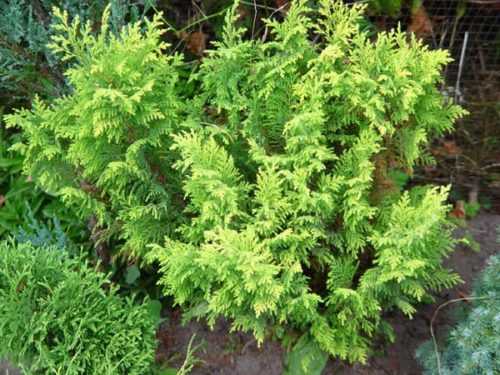
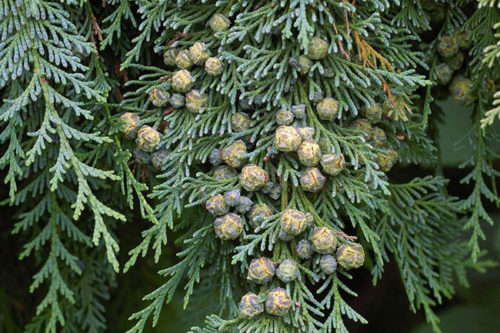
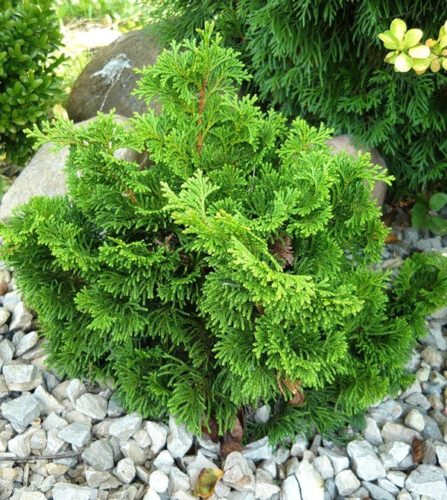
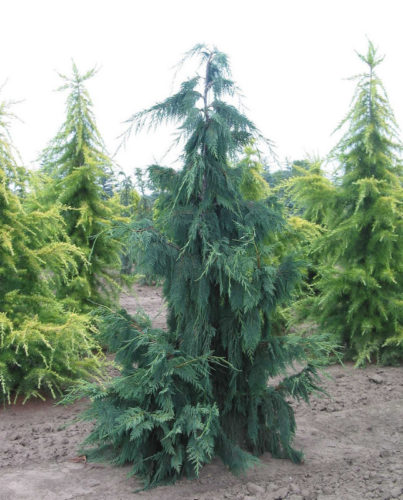
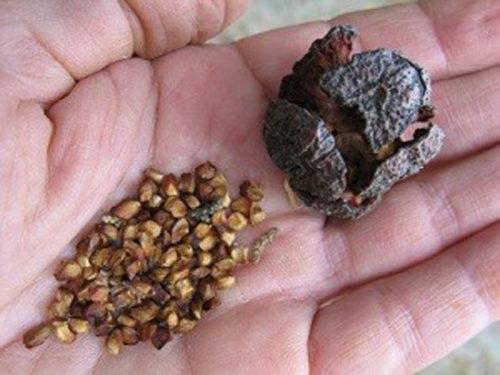
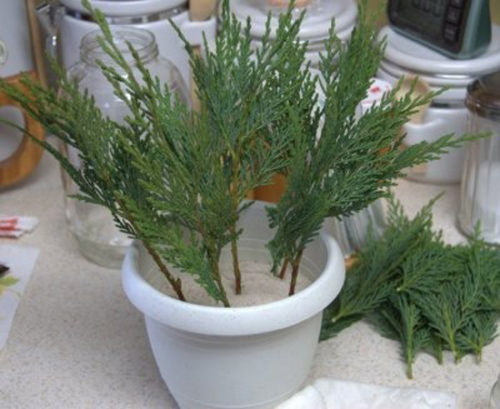
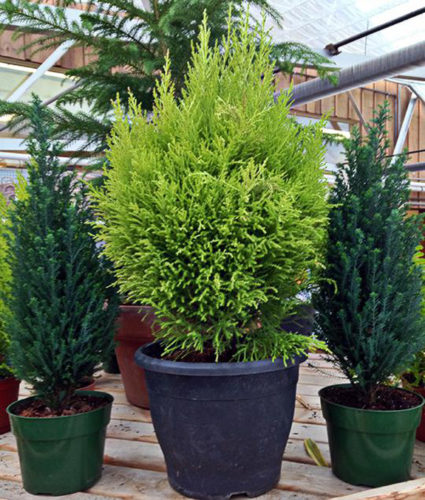
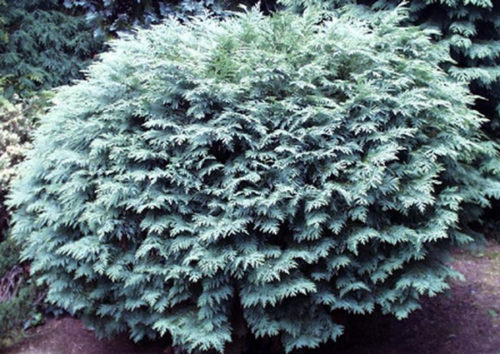
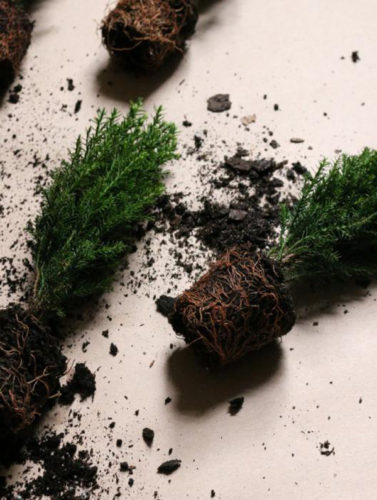
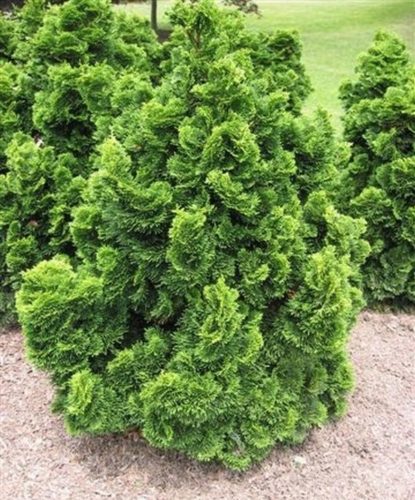
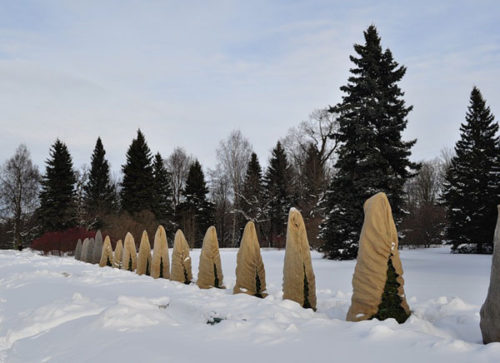
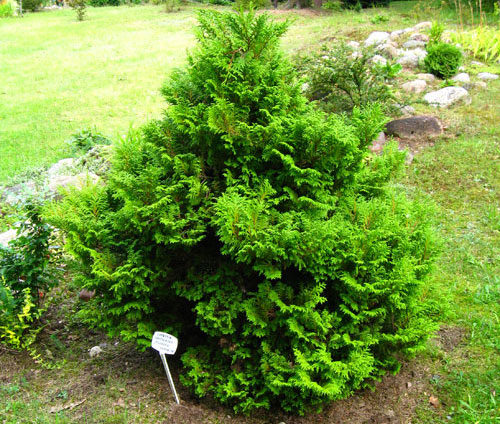
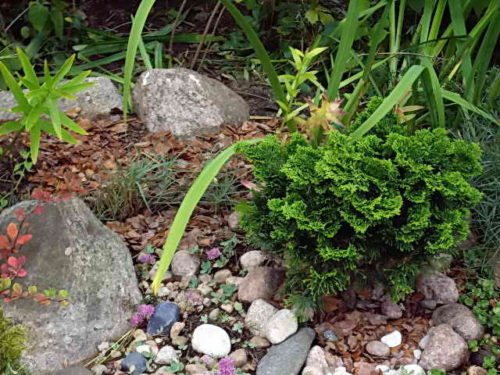
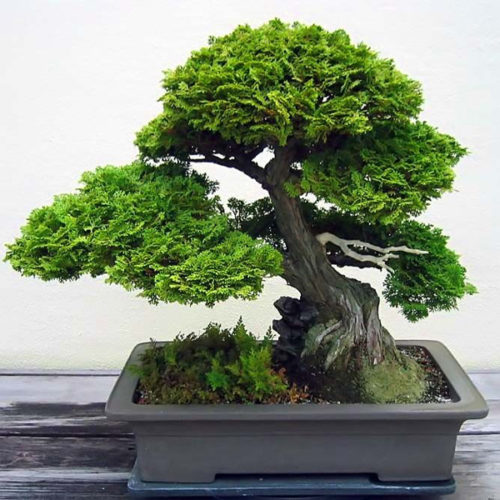
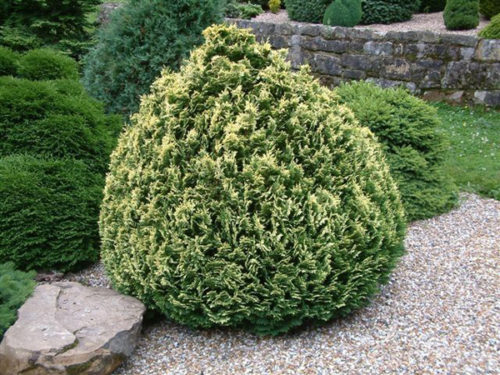












 Start a discussion ...
Start a discussion ...